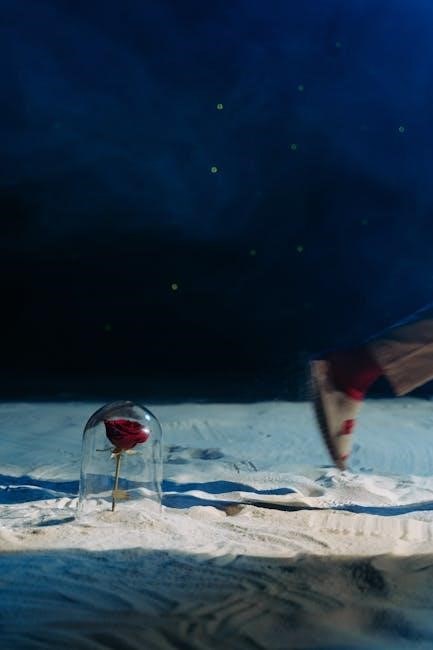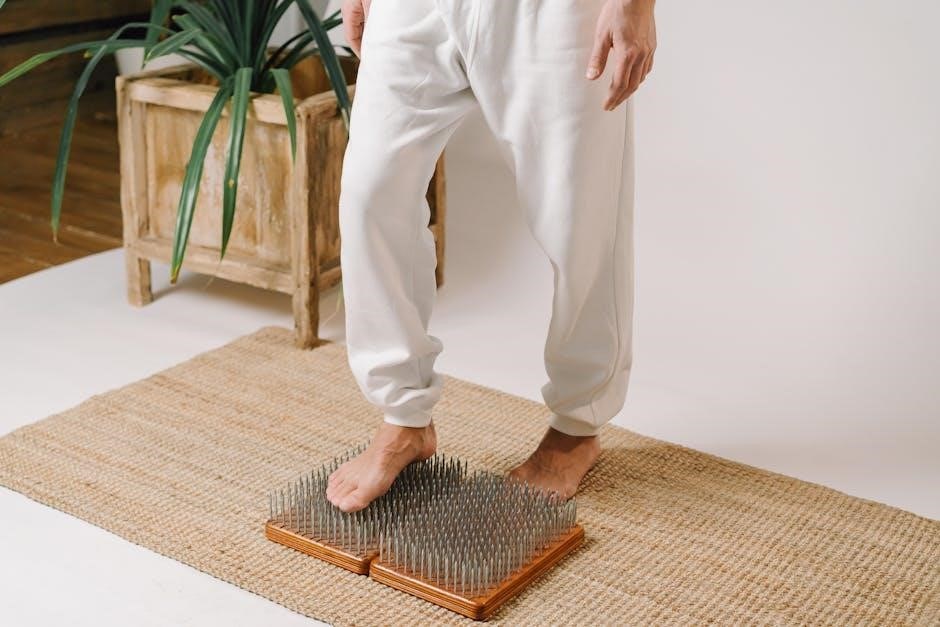Step-by-Step Guide to Gel Nails
A gel nail application involves meticulous preparation and precise techniques to achieve a professional finish. From shaping and cleaning to applying base coats, polish, and top coats, each step ensures durability and a flawless appearance. Follow these organized steps to master the process and enjoy long-lasting, salon-quality results at home.

Gather Your Materials
The first step in achieving a professional gel nail application is to gather all necessary materials. You’ll need a gel nail kit, which typically includes a base coat, gel polish, and a top coat. Additionally, ensure you have a UV or LED lamp for curing, a nail cleanser, lint-free wipes, and a nail file or buffer for shaping and smoothing your nails. Cuticle tools, such as a cuticle pusher or orange stick, are essential for preparing your cuticles. Don’t forget a base gel or primer to promote adhesion and extend wear. For clean-up, keep acetone and cotton pads handy. If you’re removing old gel, have a nail drill or nail files ready. Optional items include nail tips or forms for extensions and cuticle oil for hydration. Having all supplies organized ensures a smooth and efficient process. Always check expiration dates on products to guarantee the best results. With everything ready, you can move confidently through each step of your gel nail journey.
Prepare Your Nails
Before applying gel, ensure your nails are properly prepared for a smooth, long-lasting finish. Start by removing any existing nail polish using an acetone-based remover. Trim and shape your nails to your desired length and style using nail clippers. Use a nail file to smooth out any rough edges, ensuring all nails are uniform in shape. Gently buff the surface of your nails with a buffer to create a rough texture, which helps the gel adhere better. Cleanse your nails with a nail cleanser to remove any oils or residue. If you have weak or brittle nails, consider applying a nail strengthener. Push back your cuticles using a cuticle pusher or orange stick, but avoid cutting them. Finally, wipe your nails with a lint-free wipe to remove any dust or debris. Proper nail preparation ensures a strong bond between your nails and the gel, leading to a professional-looking finish.
Clean and Sanitize Your Hands and Nails
Cleaning and sanitizing your hands and nails is a crucial step to ensure a hygienic application process and prevent infections. Begin by washing your hands thoroughly with soap and warm water, paying special attention to the areas around your nails. Dry your hands completely before proceeding. Next, sanitize your nails using a nail sanitizer or a UV lamp to eliminate any bacteria. Dip a lint-free wipe in nail cleanser and gently rub it over each nail surface, removing any oils or residue. This step ensures better adhesion of the gel polish. Avoid touching your nails after cleaning to prevent transferring oils from your skin. Sanitize your cuticles as well, using a cuticle cleanser to maintain hygiene. For extra precaution, sanitize your tools, such as nail files and buffers, with alcohol. Keeping your hands and nails clean and sanitized creates a sterile environment for the gel nail application, promoting long-lasting results and healthy nails. This step is essential for a successful gel manicure.
Shape Your Nails Using a Nail File
Shaping your nails is a fundamental step in achieving a professional-looking gel manicure. Begin by selecting a nail file with a medium grit (around 100-150) to shape your nails according to your desired style. Place the file flat against the nail and gently move it in one direction, from the cuticle to the tip, using smooth, even strokes. Avoid sawing back and forth, as this can weaken the nail. For a natural look, opt for a rounded or oval shape, while a squoval shape offers a trendy compromise between square and oval. Ensure all nails are uniform in length and shape for a polished appearance. After filing, use a finer grit file (220 or higher) to smooth out any ridges or rough edges. Proper shaping not only enhances the aesthetic of your gel nails but also ensures better adhesion of the gel polish. Take your time with this step, as precise shaping lays the foundation for a flawless gel application. Always file in one direction to prevent nail damage.
Apply Cuticle Softener/Remover
Applying a cuticle softener or remover is essential for loosening and gently removing excess cuticle tissue. Begin by dipping a cotton swab in the softener and carefully wiping it along the cuticle area of each nail. Allow the product to sit for 10-15 seconds to penetrate deeply. Using an orange stick or cuticle pusher, gently push back the softened cuticles toward the nail bed. Be cautious not to push too aggressively, as this can cause irritation or bleeding. Focus on removing only the dead skin, avoiding the delicate skin around the nail. Once done, rinse your hands with warm water to remove any remaining product. This step ensures a smooth surface for the gel application and prevents uneven edges. Properly preparing the cuticles enhances the overall appearance of your gel nails and promotes better adhesion of the gel polish. Always handle the cuticle area with care to maintain healthy nails and skin. This step is crucial for achieving a professional-looking finish.
Push Back Your Cuticles
Using a cuticle pusher or an orange stick, gently push back the softened cuticles around each nail. Start at the base of the cuticle and work your way outward, being careful not to press too hard, as this can cause irritation or bleeding. Focus on removing only the dead skin, avoiding the delicate skin around the nail. If necessary, dip the pusher in water for better glide. After pushing back, use a lint-free wipe or cotton ball to remove any remaining residue. This step ensures a clean, even surface for the gel application and prevents the polish from lifting at the edges. Properly pushed-back cuticles also enhance the appearance of your nails, making them look neater and more polished. Be patient and work slowly to avoid damaging the skin or nail bed; This step is crucial for achieving a smooth, professional-looking gel manicure. Always prioritize gentleness to maintain healthy nails and surrounding skin. The goal is to create a seamless base for the gel polish to adhere properly.
Buff Your Nails
Buffing your nails is an essential step to create a smooth, even surface for the gel polish to adhere to. Using a nail buffer, gently buff the entire nail surface in one direction, starting from the cuticle to the tip. Begin with a coarse-grit buffer (about 100-150 grit) to shape and smooth out ridges or imperfections. Next, switch to a medium-grit buffer (180-220 grit) to further refine the surface, removing any remaining ridges or unevenness. Finally, use a fine-grit buffer (240 grit or higher) to buff the nails to a high shine, ensuring a polished finish. Be careful not to buff too aggressively, as this can weaken the nail. The goal is to create a smooth canvas for the gel polish, ensuring proper adhesion and a professional-looking result. Buffing also helps remove any natural oils from the nail surface, which is crucial for the gel to bond effectively. After buffing, your nails should feel smooth and look even, ready for the next steps in your gel nail application.
Wipe Your Nails Clean
After buffing, it’s crucial to remove any dust, oils, or residue from the nail surface to ensure proper adhesion of the gel polish. Using a lint-free wipe or cotton pad soaked in nail cleanser, gently sweep across each nail from the cuticle to the tip. This step removes any natural oils, lotions, or impurities that could interfere with the gel’s bond to the nail. Repeat the process if necessary to ensure the surface is completely clean and dry. Avoid touching the cleaned nails with your fingers, as the oils from your skin can compromise the adhesion. Once your nails are clean and free of residue, they will be properly prepared for the base coat application. This step is essential for achieving a long-lasting gel manicure. Ensure all traces of dust and moisture are removed before proceeding to the next step in your gel nail application.
Apply a Base Coat
Applying a base coat is a critical step in the gel nail process, as it creates a smooth surface for the polish and helps the gel adhere to your nails. Using the base coat brush, start at the center of your nail and gently sweep the brush from the cuticle to the tip in a steady, even motion. Ensure complete coverage, but avoid getting the base coat on your cuticles or skin. The base coat should be thin and evenly applied to prevent pooling at the edges. Once applied, place your hand under the UV or LED lamp to cure the base coat according to the manufacturer’s instructions, typically 30 seconds to a minute. This step is essential for creating a strong bond between your nail and the gel polish, preventing chipping, and extending the wear of your manicure. A good base coat also protects your nails from staining and promotes a professional finish.
Cure the Base Coat
After applying the base coat, the next step is to cure it under a UV or LED lamp. Place your hand evenly under the light, ensuring all fingers are exposed and at the same distance from the bulb. The curing time typically ranges from 30 seconds to one minute, depending on the lamp’s intensity and the brand of the base coat. Keep your hand steady and avoid moving during the curing process, as this can cause unevenness. Once the base coat is fully cured, it will be dry to the touch and ready for the next layer. Proper curing is essential for creating a strong foundation and ensuring the longevity of your gel nails. If the base coat isn’t cured correctly, the gel polish may not adhere properly, leading to peeling or chipping. Always refer to the manufacturer’s instructions for specific curing times and settings. This step is crucial for achieving a professional-looking finish and protecting your nails.
Apply the Gel Nail Polish

Select your chosen gel polish color and give the bottle a gentle shake to ensure the formula is well-mixed. Open the bottle and dip the brush, wiping off any excess polish on the rim of the bottle. Start by painting a thin, even layer in the center of your nail, then use smooth, steady strokes to cover the entire surface from the cuticle to the tip. Avoid getting polish on your cuticles or skin, as this can lead to a messy finish. Use light pressure to ensure the polish adheres evenly without pooling at the edges. If necessary, rotate the brush as you go to maintain coverage. Most gel polishes require 2-3 thin coats for optimal color payoff, so repeat this process, allowing each layer to cure before applying the next. Be patient and take your time to ensure a smooth, professional-looking application. Proper technique here is key to achieving a salon-quality finish.
Cure the Gel Polish
Once the gel polish is applied, place your hand under the UV or LED lamp to cure the polish. The curing time typically ranges from 30 seconds to a few minutes, depending on the lamp’s strength and the polish brand. Ensure your fingers are properly aligned under the light to avoid uneven curing. Keep your hand steady and avoid moving during the curing process, as this can disrupt the finish. If using a UV lamp, you may need to cure for 2-3 minutes, while LED lamps often work faster, taking about 30 seconds to a minute. After curing, the polish should be completely dry and touchable. Repeat this step for each additional coat of polish, allowing each layer to cure before applying the next. Proper curing is essential for the durability and longevity of your gel nails, so always follow the manufacturer’s instructions for the recommended curing time. This step ensures the polish adheres correctly and sets the foundation for a long-lasting finish.

Apply Multiple Coats
After the first layer of gel polish has cured, assess its coverage. If the color appears sheer or uneven, repeat the application process, starting with a thin second coat. Ensure each layer is as thin as possible to prevent the polish from pooling at the cuticles or becoming uneven. Use light, smooth strokes to cover the entire nail surface, starting at the center and moving outward toward the tips. Allow each coat to cure under the UV or LED lamp before applying the next. For most gel polishes, 2-3 thin coats are sufficient for solid colors, while more coats may be needed for metallic or glitter finishes. Avoid overloading the brush, as this can lead to thick layers that peel prematurely. After applying the final coat, ensure it is evenly spread and properly cured to achieve a smooth, professional finish. This step is crucial for achieving the desired color intensity and ensuring the longevity of your gel nails. Proper layering ensures a durable and visually appealing result.
Finish with a Top Coat
Once all the desired coats of gel polish are applied and cured, it’s time to seal your design with a top coat. This step is essential for protecting the polish, adding shine, and extending the wear of your gel nails. Using the same brush strokes as before, apply a thin, even layer of clear top coat across the entire nail surface. Ensure the top coat covers the edges and tips to prevent chipping. Avoid applying too much, as this can lead to a thick, uneven finish. Cure the top coat under the UV or LED lamp for the recommended time, usually 30 seconds to a minute, depending on the brand. After curing, wipe away any excess residue around the cuticles using a lint-free wipe soaked in nail cleanser. Finally, apply a small amount of cuticle oil to hydrate the skin and nails, completing the gel nail application process. This final step ensures a glossy, professional finish and helps maintain the longevity of your gel nails. Properly sealing with a top coat is crucial for achieving a salon-quality result.
Cure the Top Coat
Curing the top coat is a crucial step to ensure your gel nails are long-lasting and have a high-gloss finish. After applying the top coat, place your hand under the UV or LED lamp for the recommended time, typically 30 seconds to a minute, depending on the brand. The light will harden the gel, creating a durable barrier that protects the polish. During the curing process, the top coat will set completely, leaving a smooth, shiny surface. Once cured, your nails will be dry to the touch but may still feel slightly tacky from the dispersion layer. Gently wipe away any residue using a lint-free wipe soaked in nail cleanser. This step ensures the top coat adheres properly and removes any excess product; Proper curing is essential for preventing chipping and peeling, ensuring your gel nails remain intact for up to two weeks. With the top coat cured, your gel manicure is complete, and your nails are ready to withstand daily wear and tear.
Cleanse Your Nails
After curing the top coat, it’s essential to cleanse your nails to remove any residue or dispersion layer left behind. Dip a lint-free wipe or cotton ball in nail cleanser and gently wipe across each nail surface. This step ensures the nails are free from excess gel or oils, promoting a smooth, even finish. Be careful not to rub too hard, as this could damage the gel. Wipe around the cuticles and nail bed to remove any accidental gel application. Cleansing helps prevent any sticky residue from interfering with the finish and ensures the top coat adheres properly. This final wipe also prepares your nails for cuticle oil application, completing the manicure process. Proper cleansing ensures your gel nails look clean, professional, and long-lasting. By removing all excess product, you’ll achieve a polished, salon-quality result that’s ready to show off.
Apply Cuticle Oil

Applying cuticle oil is a crucial step to maintain healthy cuticles and nails after your gel manicure. Using a cuticle oil pen or a small dropper, gently apply a few drops of oil directly to your cuticles. This helps to hydrate and nourish the skin around your nails, which may have become dry during the gel application process. Massage the oil into your cuticles with a soft touch to enhance absorption. Cuticle oil not only promotes healthy nail growth but also prevents dryness and irritation. It’s important to focus on the cuticle area and avoid getting oil on the gel nails, as this could interfere with the finish. Regular application of cuticle oil after a gel manicure ensures your nails and surrounding skin remain moisturized and healthy. This step is essential for maintaining the overall appearance and longevity of your gel nails while keeping your hands looking pampered and well-groomed.
Care for Your Gel Nails
Proper care for your gel nails is essential to maintain their appearance and longevity. Avoid using your nails as tools, as this can cause chipping or lifting. Wear protective gloves when engaging in activities that involve harsh chemicals, water, or heavy lifting to prevent damage. Regularly apply cuticle oil to keep your nails and surrounding skin hydrated and healthy. Refrain from exposing your gel nails to extreme temperatures or direct sunlight for extended periods, as this can cause fading or weakening of the gel. Gently wash your hands with mild soap and avoid soaking your nails in water for long durations. Moisturize your hands frequently to maintain the health of your nails and cuticles. By following these care tips, you can extend the life of your gel nails and keep them looking vibrant and polished for weeks. Consistent aftercare ensures your gel nails remain intact and continues to enhance the beauty of your hands.
Touch Up if Necessary
After your gel nails are applied, it’s important to monitor their condition. If you notice any minor chips, smudges, or areas where the gel has lifted, consider touching them up to maintain a polished look. Start by lightly buffing the affected area to ensure a smooth surface. Apply a thin layer of gel polish, making sure to cover the imperfection completely. Cure the polish under the UV or LED lamp according to the product’s instructions. Avoid overloading the brush with too much polish, as this can lead to unevenness. Once cured, finish with a layer of top coat and cure it as well. This step ensures the repair blends seamlessly with the rest of your nails. Regular touch-ups can extend the life of your gel nails and prevent further damage. Remember to work carefully and use light strokes to achieve a professional finish. Properly touching up your gel nails can keep them looking fresh and vibrant for an extended period.
Remove Gel Nails Properly

Removing gel nails requires care to avoid damaging your natural nails. Start by soaking cotton pads in acetone and placing them on each nail. Wrap each finger with aluminum foil to secure the pad and let it sit for 10-15 minutes. This helps soften the gel. After soaking, gently scrape off the gel using a wooden stick or cuticle pusher. Avoid using harsh pressure to prevent nail damage. Once the gel is removed, use a buffer to smooth out any remaining residue and restore your nails’ natural texture. Finally, apply cuticle oil to hydrate and nourish your nails and cuticles, as acetone can be drying. Proper removal ensures healthy nails and prepares them for future applications. Always prioritize gentle techniques to maintain nail integrity and avoid peeling or breaking.

Common Mistakes to Avoid
When applying gel nails, there are several common mistakes to avoid for optimal results. One of the most frequent errors is not properly preparing the nails, such as failing to clean or buff the surface, which can lead to poor adhesion. Applying too thick a layer of gel polish is another mistake, as it can result in uneven drying and peeling. Improper curing times, either curing for too short or too long, can also compromise the finish. Additionally, not using a base coat or top coat can cause damage to the nails and lead to chipping. Using low-quality products or tools can affect the overall appearance and durability of the gel nails. Forgetting to clean the edges of the nails before curing can leave a messy finish. Lastly, rushing the process without allowing each layer to cure properly can lead to smudging and uneven results. Avoiding these mistakes ensures a professional-looking, long-lasting gel manicure.
Troubleshooting Tips
Encountering issues during a gel nail application is common, but with the right troubleshooting, you can achieve a flawless finish. If the gel polish is too thick, thin it out with a nail polish thinner. For streaks, wipe the brush on the bottle neck and start the stroke in the center of the nail, moving side to side. Smudging during curing can be prevented by avoiding movement and ensuring the surface is dry. If air bubbles form, gently press them out with the brush before curing. To fix uneven edges, use a nail art brush dipped in acetone to clean up. If the gel lifts or separates, re-buff the area and reapply. For slow drying, ensure the UV or LED light is at the correct distance and adjust curing times as needed. These tips will help resolve common issues and ensure a professional-looking result.
Maintenance for Long-Lasting Results
Maintaining your gel nails properly ensures they remain intact and chip-free for weeks. Avoid using harsh chemicals or detergents without gloves, as they can weaken the gel. Keep your nails moisturized by applying cuticle oil daily, focusing on the cuticles and nail bed. Refrain from using your nails as tools to prevent lifting or cracking. For minor chips, touch them up with a small brush and a dab of gel polish. To extend wear, apply a thin layer of top coat every few days. If a nail starts to lift, gently buff the area and reapply a thin layer of gel. Avoid excessive filing or buffing, as this can damage the nail surface. Protect your nails from extreme temperatures and abrasive activities. Regular maintenance not only prolongs the life of your gel nails but also keeps them looking fresh and polished. By following these simple care steps, you can enjoy your gel nails for up to two weeks without compromising their appearance or integrity.
